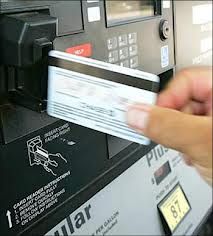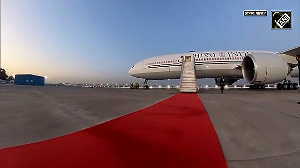 To grow the distribution network while keeping costs under check, smaller private sector banks are looking at reducing the dependence on their own automated teller machines and instead relying on white-label ATM network.
To grow the distribution network while keeping costs under check, smaller private sector banks are looking at reducing the dependence on their own automated teller machines and instead relying on white-label ATM network.
Thrissur-based Catholic Syrian Bank, which is in the process of restructuring, is planning expansion.
It is likely to go for white-label ATMs for this purpose.
“We have a very lop-sided ATM network where the number of ATMs that we have is half of the number of branches.
“Usually, it is the other way around.
“So in order to grow, we are also looking at working with proposals for vendors where we can talk to vendors who can set up the ATMs, capitalise it and work on it on a variable basis,” said Bharath Mani, head-retail marketing & product management at Catholic Syrian Bank.
Another private sector lender, YES Bank is also exploring the option of expanding its ATM presence via the WLA route.
A WLA is similar to a normal bank ATM but is not owned by a bank, instead by a private ATM service provider.
Customers can withdraw or deposit money, change pin and even withdraw mini statements from these ATMs.
For consumers, similar to other ATMs, the first five transactions are free even at these WLAs.
Sanjeev Patel, CEO, Tata Communications Payment Solutions Limited , which is the first company to set up white label ATMs in the country agreed that though the start to the WLAs has been slow, they have been quick on the block and banks are also warming up to the idea now.
“We have two sponsor banks --Axis Bank and Federal Bank -- as of now and we are in talk with two more banks. So, soon we will have four sponsor banks.”
However, on the cost structure, it still makes sense, as the cost of setting up an ATM works out to be approximately Rs 800,000-10 lakh (Rs 1 million) in a metro and the cost of maintaining it excluding rentals could go up to Rs 45-50 thousand per month.
Whereas in the case of WLA, the third party bears the cost of setting up the ATM and the banks will have to pay them an intercharge (the cost for using your card at another bank’s ATM fee in turn.
Aspy Engineer, president & country head-ATM Management & Currency Chest, YES Bank, also agreed that they were looking at the WLA route.
“We are thinking of getting the best possible distribution and what is the best mix for it,” he added.
Despite the fact that the Reserve Bank of India had given an in-principle approval to WLAs in mid-2013, the roll out of these ATMs has been in the slow lane so far.
Bankers explain that even though it brings down the cost of setting up ATMs, the banks haven’t taken up the option, as ATMs are also a vehicle to rebrand and increase visibility, which gets lost with these independent ATMs.
The sponsor bank takes care of cash operations, dispute resolutions and regulatory reporting for WLAs.
Patel explains that the cost of setting up a WLA is anywhere between Rs 3-5 lakh on an average and it can take up to anywhere between six months to one year to break even.
The image is used for representational purpose only










 © 2025
© 2025